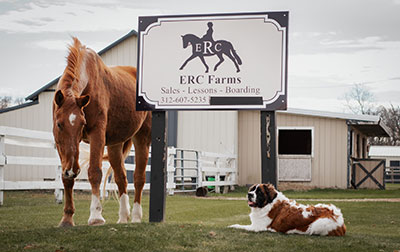
Why Choose Animal-Assisted Therapy?

At Fields for Growth Therapy, we offer an unparalleled, hands-on experience harnessing the incredible power of horses and other animals, including pigs, goats, dogs, cats, donkeys, and ducks, as therapeutic support to promote and support educational, social, and emotional growth and development.
Whether in a wide arena or a beautiful green pasture, sessions with our animals are conducted on the ground, mounted, and/or riding (as applicable).
The uniqueness of working with our animals provides important therapeutic sensory components. Imagine the power of transforming your mental or emotional challenges into physical obstacles, where you can successfully guide your animal – and yourself – through increasing your social and emotional wellness.
Discover your inner strength, increase your self-worth, learn new skills, and change your internal dialogue while you work side-by-side with our incredible animals.
Animal-Assisted Therapy in Counseling
Animals have long been a component in aiding and easing people to relieve stress, anxiety, depression, trauma and so forth. The first known cases of Animal-Assisted Therapy was first documented in England in 1690!
Amazingly, the powerful interactions of animals, ranging from cats, rats, dogs, pigs, goats, lambs, cats, guinnea pigs, rabbits, horses, donkeys, and other mammals has created a plethora of treatment “tools” for positive mental health growth and wellness.
Prior to animal-assisted therapy, I would walk with clients on a bike part, surrounded by trees/bushes. I would notice the birds and their behaviors and utilized the activities to ask clients what they thought the birds were “saying and doing.” Following the great outdoor walks, I began formerly using animals as “co-therapists,” in 1999.
This began with providing a more specific type of animal-assisted therapy, equine-assisted therapy, to a child, who was grieving the death of a parent, that had occurred 2 years earlier. At the time, they were only expressing anger. The child was finally able to express other emotions, such as sadness. This was noted only by them brushing a horse while talking about the loss, and crying. Treatment continued using equines within the modality of animal-assisted therapy.
Benefits Of Animal Assisted Therapy. Nipping at the Traditional Model with Fields for Growth Therapy
The joy of using animals as treatment tools is unique in that it is a different environmental setting. The sessions are in an arena, paddocks, pasture, pens, and/or yards. The views and smells alone open the parts of a client to a new reception of expressions. Combine this with sounds of “baaing, neighing, oinking, meowing, and barking, and the auditory sense is sparked. Animal-assisted therapy rocks!
The feel, or kinesthetics, of touching an animal sets up another sensory experience. Of course, smells/olfactory is also stimulated. In animal-assisted therapy, the animal “co-therapists” entrust themselves with each new person and the relationship begins with client(s) choosing who they resonate with, as a partner.
Animal-assisted therapy sessions begin with noting the parts of the animal to be aware of for safety. The session continues with client (s) discussing their concerns, needs, and desires for change. Utilizing props, the client (s) creates an obstacle that represents what they wish to get over, though, or around in their life. Then the client leads, walks, or carries the animal though their “obstacles.”
Human Interactions with Animals. A Proven Modality for Therapy
My favorite part of Animal-Assisted Therapy, is noting client(s) responses to open ended questions and responding with metaphorical phrases, such as, “you said the horse looked or seemed afraid today. What might you be afraid of today?’ Or asking, “what might the dog think the collar represents for them? What is you “collar?” “What did the pig do when you called them? How do you respond when you are called to do something?” The metaphorical areas are change agents in the sessions.
Discover More About Fields for Growth Animal-Assisted Therapy
Interactions with the animal(s) is never a constant certainty, as both the client(s) and their “partner,” are always verbally and nonverbally engaging. Client (s) respond much more openly and are motivated to work through issues in the environment, rather than sitting in an office. Remember the last time you were with an animal and how that may have changed sensory input for you? Imagine the possibilities with animal assisted therapy!
I am always amazed at the joy of the “co-therapists,” and the connections they display with clients. I learn so more about what is important to client(s) and what the themes are for change, than simply sitting across from them in an office room. As a counselor, Animal-Assisted Therapy is a wonderful creative mental health treatment.
Dr. Sandra Lee Kakacek, LCPC
Animal-assisted therapist, trainer, and certification facilitator
630-675-3944
